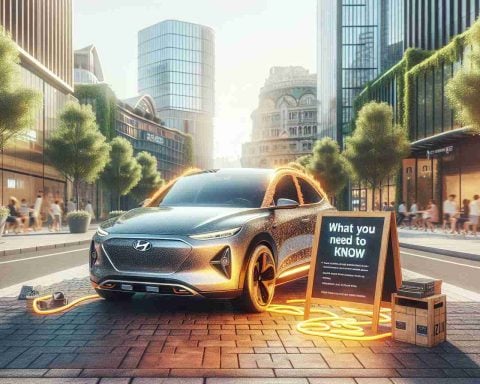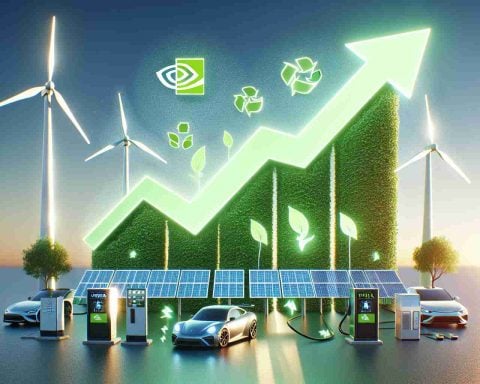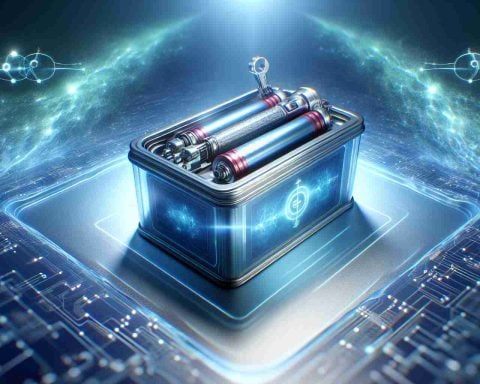- ProLogium Technology is set to start pilot production of its fourth-generation lithium ceramic battery by the end of 2025.
- This battery features an inorganic electrolyte, enhancing electric vehicle capabilities with higher energy density and faster charging rates, even in extreme cold.
- The battery achieves 380 Wh/kg specific energy and up to 900 Wh/L energy density, improving range, cost-effectiveness, and vehicle weight.
- Innovations such as thick-film and bi-cell technologies contribute to enhanced efficiency and performance.
- A ceramic separator with superior thermal conductivity stabilizes the battery under high demands, reducing cooling system requirements.
- The battery performs reliably at temperatures as low as -20°C, with increased safety and non-combustibility.
- An Active Safety Mechanism ensures protection against thermal issues and passes rigorous overcharge tests.
- Future goals aim to surpass 450 Wh/kg, sparking interest in the promise of sustainable energy advancements.
A seismic shift is approaching in the world of rechargeable batteries. ProLogium Technology plans to launch pilot production of its trailblazing fourth-generation lithium ceramic battery by the close of 2025, promising to upend norms with a fully inorganic electrolyte. This advancement unlocks electric vehicles’ full potential by boosting energy density and ensuring quick charging, even in the coldest corners of the earth.
Picture this: a specific energy leap to 380 Wh/kg and an energy density surge up to 900 Wh/L—a tangible improvement over the third generation’s strides. Such progress enables electric vehicles to travel farther, cost less, and feel lighter beneath your feet. The implementation of thick-film and bi-cell technologies fuels this transformation, crafting cars that whisper efficiency.
The magic, however, lies within ProLogium’s ceramic separator. With threefold the thermal conductivity of its liquid predecessors, it deftly maintains stability at breakneck speeds and under high loads. The expansive format of each cell, reminiscent of opening a scroll, disperses heat like a sigh, minimizing the need for cumbersome cooling systems and shaving weight from efforts.
And if the northern winds howl and temperatures plummet, fear not—this battery perseveres, yielding consistent performance even at -20°C. Its fully inorganic soul dances with safety, negating combustibility under searing conditions. A sophisticated Active Safety Mechanism stands vigilant, warding off threats of thermal chaos.
In demanding overcharge trials, ProLogium’s battery emerges unscathed—earning hazard level credentials that inspire trust. The company looks to the future with ambitious eyes, aiming to exceed 450 Wh/kg with innovations still unfolding. Industry insiders watch closely, eager to see if this battery tech will power a sustainable tomorrow.
Revolutionary Breakthroughs in Battery Technology: What ProLogium’s Innovations Mean for Our Future
As ProLogium Technology spearheads the development of its fourth-generation lithium ceramic batteries, this seismic shift in the world of rechargeable batteries stands to affect electric vehicles (EVs), energy storage solutions, and global carbon emissions reduction initiatives. With the anticipated launch of pilot production by the end of 2025, the company’s advancements set a new benchmark for energy density and charging efficiency, promising to redefine the electric vehicle landscape.
Enhanced Battery Performance and Longevity
ProLogium’s new battery technology boasts a specific energy increase to 380 Wh/kg and an energy density of 900 Wh/L. This significant improvement over existing battery capabilities translates to extended travel ranges for electric vehicles, lower production costs, and lighter vehicle weights. These benefits collectively enhance the practicality and attractiveness of EVs to a broader audience, potentially accelerating the shift from internal combustion engines to electric vehicles.
Technological Innovations: Thick-Film and Bi-Cell Technologies
The implementation of thick-film and bi-cell technologies is a cornerstone of ProLogium’s breakthrough. These technologies contribute to improved overall energy efficiency and performance of the battery by increasing the surface area for electrochemical reactions and optimizing the structural design, thus facilitating more effective energy storage and delivery.
Safety First: The Role of the Ceramic Separator
One of the critical innovations in this new battery design is the ceramic separator, which replaces traditional polymer-based separators. With threefold the thermal conductivity of traditional systems, this new separator significantly enhances stability and safety, allowing the battery to maintain its performance under rapid charging or high-load conditions. It also operates efficiently in extremely cold temperatures, as low as -20°C, ensuring reliability and consistency.
Safety Mechanisms and Reliability
The inclusion of an Active Safety Mechanism provides an additional layer of security by preventing overcharging and thermal runaway—key issues that have historically plagued lithium-ion batteries. This feature not only ensures user safety but also builds consumer confidence in adopting electric vehicles powered by such advanced technology.
Future Implications on Global Scales
ProLogium’s battery development has far-reaching implications, including the potential reduction in global carbon emissions by making electric vehicles more accessible and appealing. Additionally, these advancements could catalyze further developments in energy storage technologies, affecting renewable energy sectors by providing more efficient storage solutions that can complement solar and wind power systems.
Questions and Considerations
– What are the potential environmental impacts of scaling up this new battery technology?
– Scaling up production must consider sustainable sourcing of materials and end-of-life recycling of battery components to minimize environmental impact.
– How will these advancements affect the global automotive industry?
– Major automotive brands may seek partnerships with battery innovators like ProLogium to enhance their vehicle offerings, potentially leading to faster innovation cycles and increased competition.
– What challenges might ProLogium face in commercializing this technology?
– Challenges may include manufacturing scalability, cost implications, and securing a reliable supply chain for raw materials.
As we edge closer to this transformative horizon in battery technology, the world watches to see how ProLogium’s innovations will shape not only the future of transportation but also the broader push towards sustainable energy solutions.
For credible updates and insights into advancements in battery technology and sustainability, visit ProLogium Technology’s main website.



















